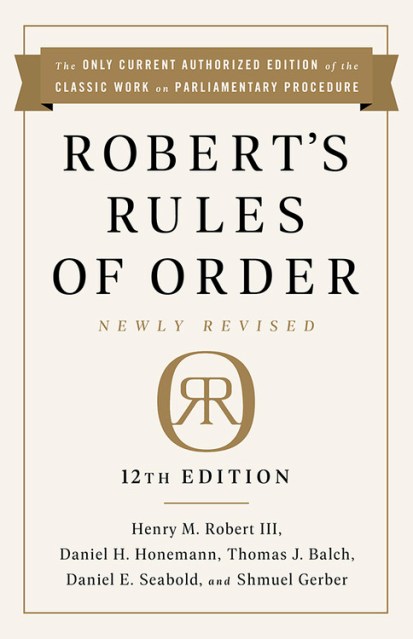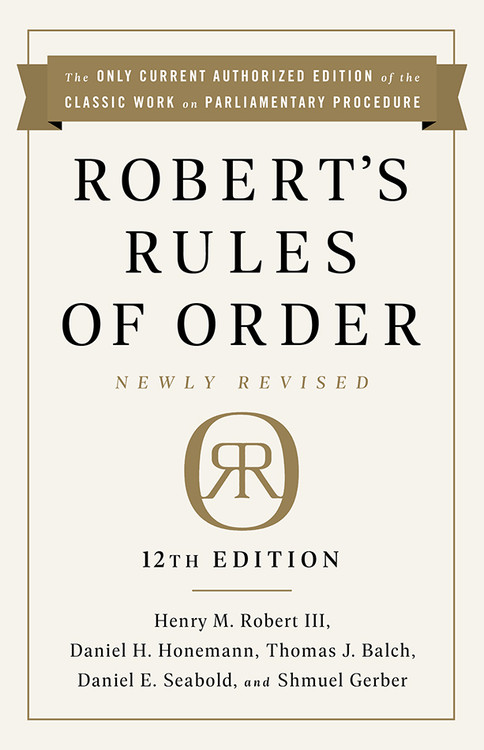Promotion
Use code MOM24 for 20% off site wide + free shipping over $45
Robert's Rules of Order Newly Revised, 12th edition
Contributors
By Daniel H. Honemann
By Thomas J. Balch
By Daniel E. Seabold
By Shmuel Gerber
Formats and Prices
Price
$19.99Price
$24.99 CADFormat
Format:
- Trade Paperback (Revised) $19.99 $24.99 CAD
- ebook (Revised) $24.99 $32.99 CAD
- Hardcover (Revised) $85.00 $106.00 CAD
- Hardcover (Revised) $35.00 $44.00 CAD
- Audiobook Download $29.98 $37.98 CAD
This item is a preorder. Your payment method will be charged immediately, and the product is expected to ship on or around September 1, 2020. This date is subject to change due to shipping delays beyond our control.
Also available from:
Robert’s Rules of Order is the recognized guide to smooth, orderly, and fairly conducted meetings. This 12th edition is the only current manual to have been maintained and updated since 1876 under the continuing program established by General Henry M. Robert himself. As indispensable now as the original edition was more than a century ago, Robert’s Rules of Order Newly Revised is the acknowledged “gold standard” for meeting rules.
New and enhanced features of this edition include:
- Section-based paragraph numbering to facilitate cross-references and e-book compatibility
- Expanded appendix of charts, tables, and lists
- Sample rules for electronic meetings
- Helpful summary explanations about postponing a motion, reconsidering a vote, making and enforcing points of order and appeals, and newly expanded procedures for filling blanks
- New provisions regarding debate on nominations, reopening nominations, and completing an election after its scheduled time
- Dozens more clarifications, additions, and refinements to improve the presentation of existing rules, incorporate new interpretations, and address common inquiries
Coinciding with publication of the 12th edition, the authors of this manual have once again published an updated (3rd) edition of Robert’s Rules of Order Newly Revised In Brief, a simple and concise introductory guide cross-referenced to it.
Genre:
- On Sale
- Sep 1, 2020
- Page Count
- 816 pages
- Publisher
- PublicAffairs
- ISBN-13
- 9781541736696
Newsletter Signup
By clicking ‘Sign Up,’ I acknowledge that I have read and agree to Hachette Book Group’s Privacy Policy and Terms of Use







